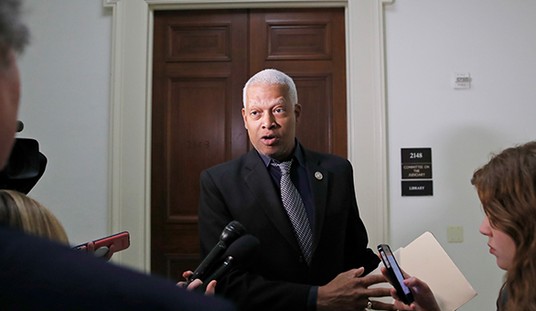
At 2% in national polls, 1.7% in Iowa, and down to 8% and fifth place in New Hampshire after having been in double digits there in late August and early September following a big TV ad barrage, John Kasich’s presidential campaign doesn’t need a lot of help losing. But it may still need help being put out of its misery. We can assist on that score by dismantling the cornerstone of Gov. Kasich’s case for being put on the national ticket on account of his “electability,” evidence of which has thus far been undetectable by presidential poll respondents.
The chief argument for Kasich is that (1) Ohio is crucially important – no Republican has ever won the White House without winning it, and indeed only two Democrats (John F. Kennedy in 1960 and FDR in his fourth run in 1944) have won without Ohio since 1892; (2) Kasich is uniquely popular in Ohio, and his spectacular electoral success there suggests a formula that translates nationally, or at least throughout the crucial states of the Midwest.
Point Number Two derives heavily from Kasich’s overwhelming victory in his 2014 re-election campaign. It was indeed an impressive victory: Kasich swept 86 of Ohio’s 88 counties, winning re-election by over 30 points with 63.8% of the vote, the second-largest margin of victory (after George Voinovich in 1994) in an Ohio Governor’s race since 1820. Undoubtedly, having unseated a sitting governor in 2010 and won re-election easily in 2014, Kasich is fairly popular in Ohio. A Quinnipiac poll in October found his approval rating at 62%.
But a closer look at 2014 illustrates why Kasich’s victory was not as impressive as it looks, and should not be the sole basis for running a national campaign. One part, if you followed the 2014 elections, you already know: Kasich’s opponent, Ed FitzGerald, was a dumpster fire of a candidate, who was more or less abandoned by the Democratic party after a story broke on August 1 that “Officers responding to a call of suspicious behavior found Cuyahoga County Executive Ed FitzGerald and a woman who was not his wife in a parked car at 4:30 a.m. on a Saturday in 2012.” Kasich was already winning, having built a 7-10 point spring poll lead into the low double digits (although PPP, the only pollster ever to have Kasich trailing in the race, published a poll commissioned by Ohio Democrats in mid-July that claimed to show Kasich up 45-44). But after that, FitzGerald completely collapsed, never again polling above 37%. Even so, the RCP average had Kasich up by 20 on the eve of the election, not 30.
What happened? Embarrassed by their doomed candidate, Democrats stayed home. 3.06 million people turned out to vote, the lowest total in an Ohio Governor’s race (excluding a 1959 special election) since 1954 and nearly a million fewer voters than in the 2006 election (which Democrat Ted Strickland won by 23 points). FitzGerald got just over a million votes; except for Robert Burch, who got steamrolled by Voinovich in 1994, that was the lowest vote total for a Democrat in Ohio in recent history. The Democrats got 200,000 more votes losing by 18 points in 1962. Kasich got 1,889,186 votes in 2010, worth 49% of the vote – four years later, in his 30-point win, he got 1,944,848. He had converted or turned out a net total of about 55,000 more Ohioans after four years in office.
It’s true that unlike 2010 and 2006, 2014 did not feature a Senate race in Ohio. But how low was turnout? This is where it gets really wild: as I noted a few weeks ago, more voters turned out in Ohio to vote in 2015 than in 2014, even though there were no statewide offices on the ballot. Instead, 3.255 million people turned out to vote (out of 7.529 million registered voters) on a referendum over legalizing marijuana:

The number of people who voted against legal marijuana in Ohio in 2015 exceeded the number of people who voted for John Kasich in Ohio in 2014.
Now, discouraging the other side’s voters from showing up is part of how successful candidates win elections; declines in opposition turnout was also a big part of how Chris Christie won easy re-election in New Jersey in 2013 and how [mc_name name=’Sen. Ted Cruz (R-TX)’ chamber=’senate’ mcid=’C001098′ ] won a low-turnout Senate race in 2012. But as I have noted before, exciting and turning out new voters will be crucially important to winning a national election – [mc_name name=’Sen. John McCain (R-AZ)’ chamber=’senate’ mcid=’M000303′ ] and Mitt Romney each got over 2.6 million votes in Ohio, and both lost. Kasich’s two statewide wins in Ohio demonstrate that he’s a familiar and well-liked face in tune with the local electorate, but he’s not the one who picked Ed FitzGerald as the Democratic candidate, so there’s only so much you can credit Kasich for his huge margin in 2014, and at a minimum it supplies no evidence that Kasich has some unique talent for inspiring and turning out marginal voters in Ohio.
Moreover, the idea that the GOP needs an Ohio-centric campaign is a fallacy. Despite the rivers of ink spilled on the theory that Ohio would be an Obama “firewall” in a close campaign, Obama ended up winning it by just under 3%, slightly less than his national popular margin of victory. Ohio in 2012 was more or less what it has consistently been since 1856 (with the exception of a few redder elections in the Grant-Hayes-Garfield-McKinley years, when its home state candidates dominated the national GOP) – just very slightly more Republican than the nation as a whole:

Since 1936, the GOP has never run more than 4 points better or 2 points worse in Ohio – as a share of the two-party vote – than it has nationally; since 1964, it’s never run more than +2 or -1, and 1972 was the last time Republicans did worse in Ohio than in the national popular vote:

In other words, the odds are fairly overwhelming that if we nominate a national candidate who can win nationally, he or she will win Ohio; if we nominate another McCain or Romney on a national level, he or she will lose Ohio, too.
There are certainly things for Republican voters to like about Kasich; FiveThirtyEight has detailed his unflagging pro-life campaign to tighten the screws on the state’s abortion clinics. But for a lot of reasons, large and small, Kasich is out of step with the mood and temper of the party as well as what it needs to do in order to generate new voters. Kasich’s expansion of Medicaid and defenses of parts of Obamacare mean he would face exactly the same handicaps campaigning against the law’s inherent flaws and predictable failures that Mitt Romney did. And worse: even Romney never told Obamacare’s GOP critics that they were a bunch of bad Christians who needed to go buy a Bible. His insistence that he would enforce rather than immediately abrogate the Iran deal, on which he memorably sparred with [mc_name name=’Sen. Ted Cruz (R-TX)’ chamber=’senate’ mcid=’C001098′ ] at the second debate, similarly places him not only outside the GOP mainstream but in a position of weakness in criticizing the deal. Kasich’s hiring of John Weaver and Fred Davis, the masterminds of the Huntsman 2012, McCain 2007 (before the comeback) and other unsuccessful efforts to win votes by insulting GOP voters, is a sign of how out of touch Kasich is with the moment and the voters he would need to win.
The result of this has been, not only a decline in his overall poll position, but a decay in favorable views of the Ohio Governor since Republican voters started seeing more of him. The WBUR New Hampshire poll is the most vivid evidence of this:

(Credit to @jasonahart for the image)
Other national and local polls have likewise shown that neither voters in general nor GOP voters in particular are all that favorable to Kasich, and that his favorables are getting worse. The December 2 national Quinnipiac poll, for example, showed Kasich underwater and with the fewest voters approving him of any of the GOP candidates, and second to last in net favorability among GOP voters:

By contrast, the July Q poll had Kasich at 16/13 with all registered voters and 30/7 with Rs, August at 25/12 with all, 36/5 with Rs, September at 26/15 with all, 43/9 with Rs, but early November found him down to 23/20 with all voters, 31/23 with Rs. Regardless of your view of the usefulness of any particular poll, those are apples-to-apples comparisons from the same pollster showing a markedly negative trend down from +34 in September to +7 in early December. PPP’s New Hampshire poll showed Kasich down from 49-22 (+27) in late August to 38-35 (+3) in early December. I could cite similar trends from other pollsters. The more Republicans see of Kasich, the less they like him – not traditionally a characteristic of a guy whose chief selling point is how much voters are supposed to like him (and the opposite of the trendline for [mc_name name=’Sen. Marco Rubio (R-FL)’ chamber=’senate’ mcid=’R000595′ ], the candidate who is actually most favored by electability-oriented GOP campaign professionals who have experience winning elections).
Even if electability is your main or only criterion for picking a candidate, it’s hard to find data supporting the notion that John Kasich 2016 and electability belong anywhere in the same sentence.













Join the conversation as a VIP Member